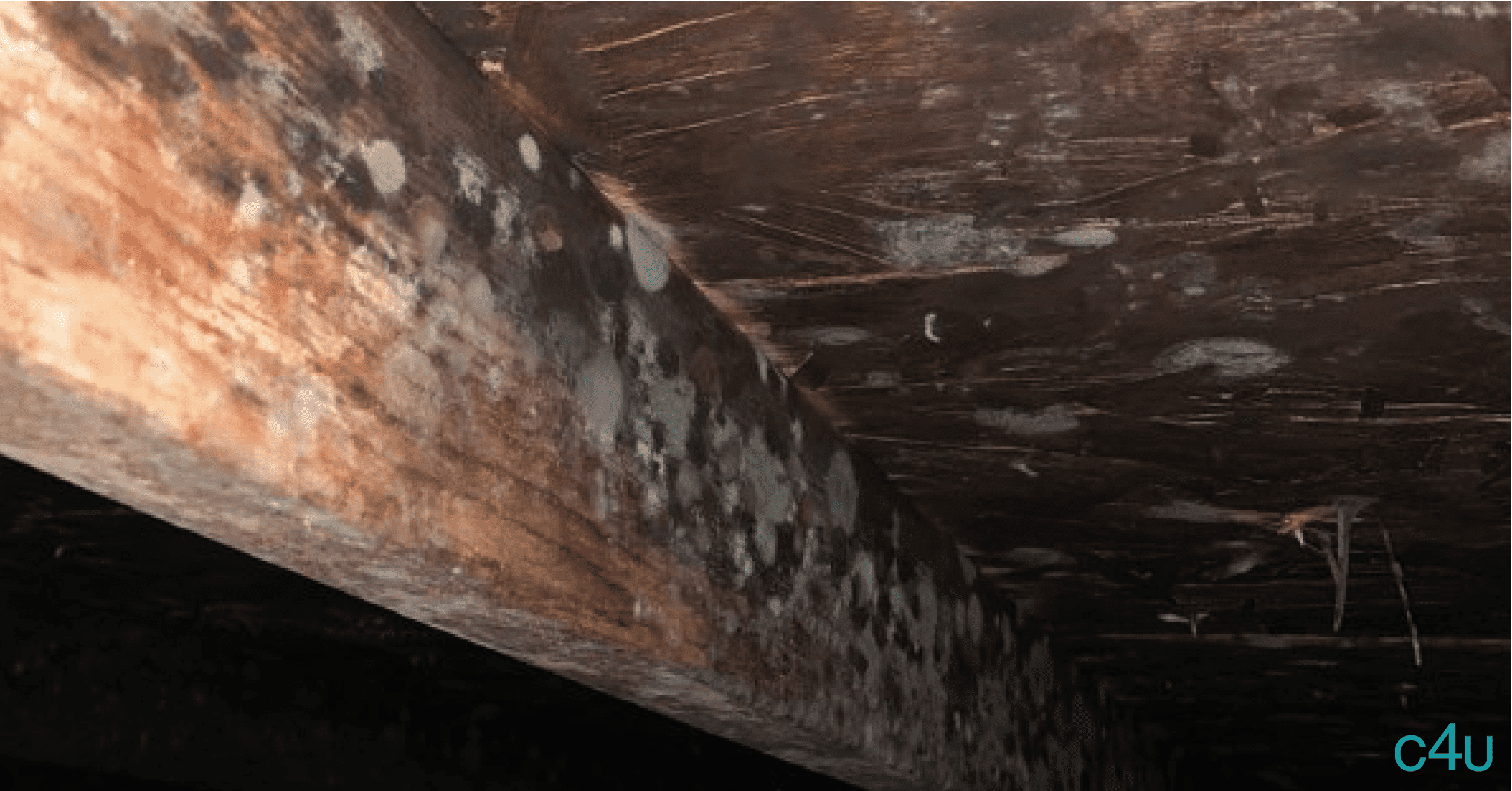
This photograph shows how you DON’T want your attic to look, and that is one of the reasons you want a professional home inspection before you buy.
There has been a lot of media hype surrounding mold, with good reason.
According to Canada’s CDC: Mold can cause many health effects: for some people, mold can cause a stuffy nose, sore throat, coughing or wheezing, burning eyes, or skin rash. People with asthma or who are allergic to mold may have severe reactions. Immune-compromised people and people with chronic lung disease may get infections in their lungs from mold.
Today’s prospective home buyers want a home that has been mold inspected - especially if there are any indications of the residence being of a past Grow-Op. Looking for potential areas of mold is part of any good professional home inspection. At c4u Inspections Ltd., our home inspectors are trained to look for mold growth, and can identify potential areas of concern so you can make an informed decision about your potential purchase.
Mold can grow just about anywhere but is most commonly found in areas such as bathrooms, kitchens, basements, cabinets, and near pipes or ducting areas. It only needs a few elements to grow and proliferate throughout your home, the key element being moisture.
Mold behind drywall may be one of the most common household problem areas as drywall, wood, and cotton are ideal food sources.
Ceiling mold is also common due to a lack of ventilation and accumulation of moisture.
But remember, if mold is found, it isn’t the end of the world. It CAN be remediated to create a safe and healthy home environment. The most import thing is that you find it; then you can take the steps needed to rectify the situation.
There are also some good tips to avoid getting mold in your property in the first place.
*Also remember - sometimes mold is not visible, so if you suspect you might have some, c4u Inspections Ltd also does air sampling for mold to identify if you have any lurking in places that you can’t readily see. (Learn more here)